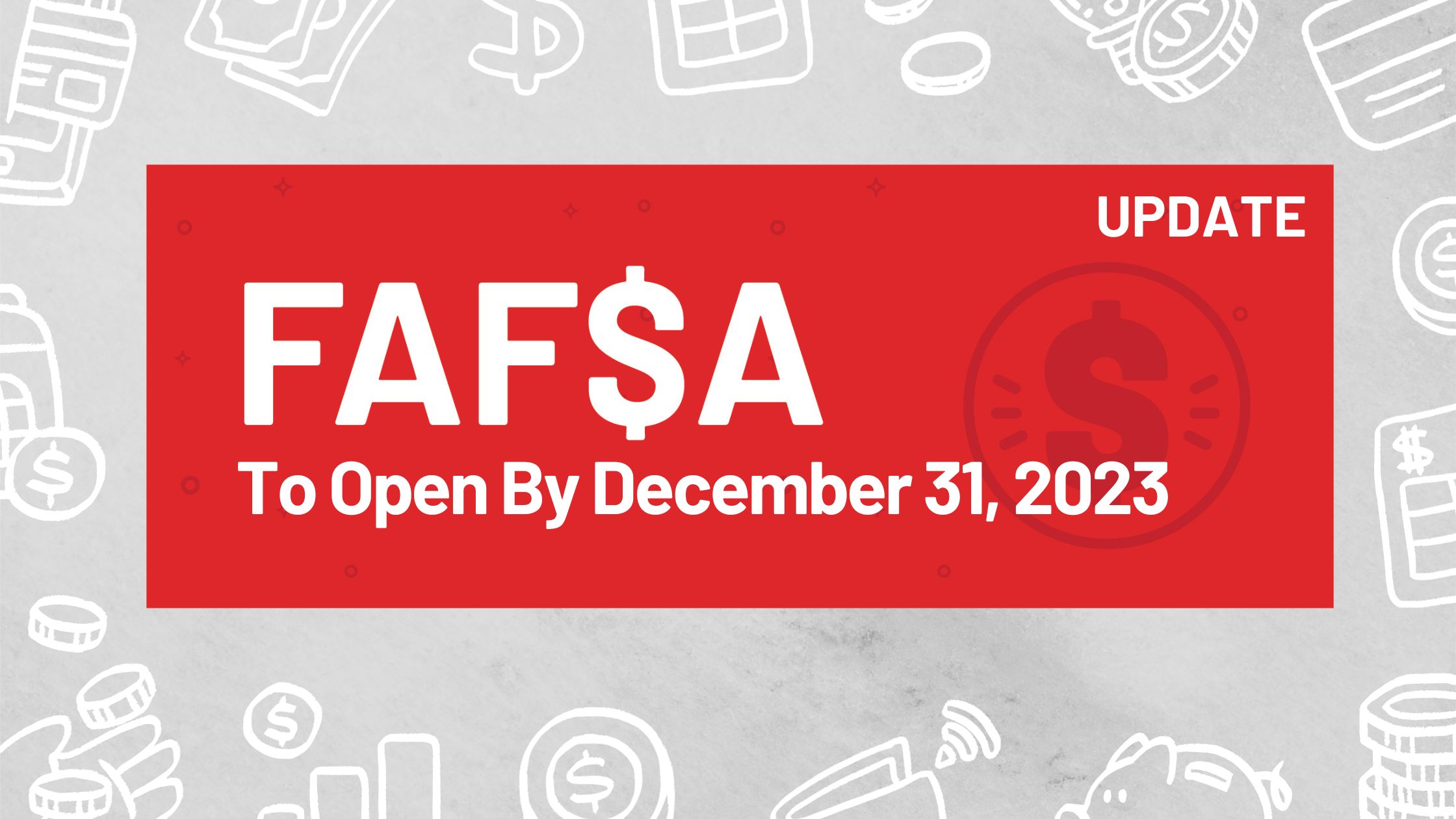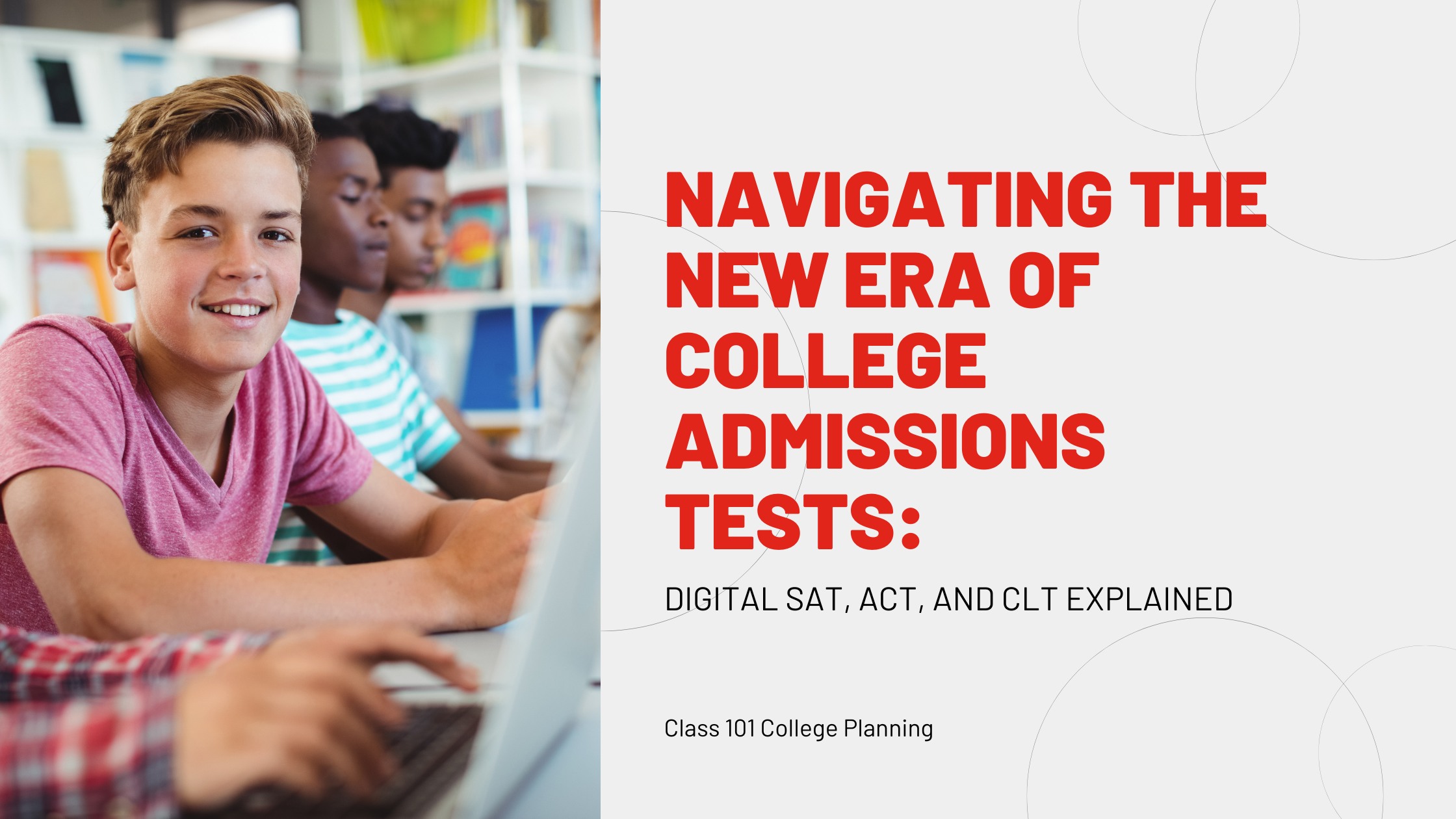October 15, 2023

**UPDATED 12.12.23**
The Department of Education released an update on November 15th, 2023 that the 2024-2025 FAFSA will be available for students and families by December 31, 2023.
The revamped FAFSA form has been overhauled to ensure a more streamlined and user-friendly experience for families, which we have talked about in our blogs. Another notable enhancement is the secure integration allowing applicants to seamlessly transfer their federal tax details directly from the IRS. This modification is set to simplify the task of collecting and submitting tax information.
Moreover, the updated FAFSA incorporates changes in student aid calculations, thereby expanding the eligibility for Federal Pell Grants to a larger number of students.
To get ahead, families can start by examining the prototype form accessible online. However, it’s important to note, as stated by the Department of Education, that the prototype doesn’t serve as an early release of the finalized form. Utilizing the prototype can still be valuable in understanding what applicants might encounter for the 2024–25 cycle.
There are still a number of unknown updates to the FAFSA, but we will continue to monitor the progress and bring you updated information to help support you in your application process. We invite all students and families to join us in our upcoming National Class 101 FAFSA webinar scheduled for December 12th at 7 p.m. Register HERE and join us for all updates surrounding the 2024-25 FAFSA.
*******************************************************************************************************
As you might have heard from our prior blog, the Free Application for Federal Student Aid—better known as FAFSA—is undergoing major changes. These changes are the result of legislation by Congress to make the FAFSA shorter and less complicated for students and their families.
These changes might be necessary, but they can be a source for stress for families going through the college application process. In this blog, we’ll try to go through some key information that you need to know to get the most out of financial aid.
As we’ve written previously, the FAFSA is a centralized form that was created in 1992 by Congress to help students more easily seek financial aid from the state and federal government. It provides information on who is eligible for how much aid and gives officials a way to assess eligibility; the form is required by all colleges and universities for consideration of need-based financial aid, work-study, and loans.
In 2020, the US Congress passed legislation requiring the Department of Education to make various improvements to the student aid application process. The Department of Education used this as an opportunity to launch what it calls “the most ambitious and significant redesign of the federal student aid application and delivery in decades.” This entails a comprehensive redesign of the form with a goal to make the process simpler.
While the new law and directives from the Department of Education will result in a variety of changes, there are a handful of important changes that are relevant for families.
First, lawmakers required the Department of Education to simplify the question themselves. While families previously going through federal aid questions could be expected to answer many, many questions, the new process will ask for far fewer questions from families.
Second, the way financial aid is calculated will be changed. While in previous years, students relied on an Expected Family Contribution (EFC) to calculate their need, students applying for college for the 2024–2025 academic year will have their aid calculated according to a Student Aid Index that will determine “how much federal student aid the student would receive if the student attended the school.”
This index will rely on a new formula and information disclosed by each contributor to a student’s tuition payments (e.g. the student themselves, their parents, other guardians). If families decline to provide consent for this information, the FAFSA will be unable to calculate eligibility for aid. The hope is that these revisions will help in identifying students with a pressing need for aid.
Finally, the FAFSA will include various quality-of-life improvements meant to make the form easier and more accessible. Instead of manually inputting information, students and their families will be able to import data directly from the IRS. Students will be able to list up to 20 schools on their FAFSA via the online application (an increase from the 10 currently allotted).
The form itself will also be available in the 11 most common languages across the United States to ensure everyone can access it.
Traditionally, FAFSA becomes available in October of every year to give students ample time to apply for aid. This year, however, the Department of Education has delayed the release of the form until December to give itself the opportunity to enact and test the changes.
The exact date in December remains unclear, though most college admissions boards expect the application to go live in late December.
Colleges are taking the changes to the FAFSA in stride, updating their timelines to accommodate a delay by the federal government.
For the University of Dayton, for example, students will be notified of their merit scholarships after they receive their acceptance letter. Students will be told to expect to apply for FAFSA in January and receive full financial aid offers by March 2024.
This information will all be accessible on each student’s Admissions Portal, though Dayton will also provide a webinar to go over FAFSA on Monday, December 4th through its Undergraduate Parent Co-Pilot Series.
Arizona State University, meanwhile, is urging families not to worry about financial aid until the adjusted FAFSA form launches. According to Admissions Services, it will use a robust communication plan that relies on email, print, and texts to keep families updated. Like Dayton, it will also offer a “large virtual experience program and digital resources to help students complete their FAFSA, and understand their financial aid packages.”
While the revised FAFSA might not be available until December, there are still actions that families can take to make sure they get the most out of their financial aid. To learn what these actions are, we encourage you to sign up for a meeting with a Class 101 college advisor.

April 8, 2024
It seems like every day there is a new announcement about colleges adjusting their policies for admissions. Some of these changes can be helpful for students—making the process more straight-forward or removing some requirements—but the immediate aftermath of the decision can still be confusing. People ask themselves: What if I am missing something? Have there […]
Read More >
March 13, 2024
Navigating the New Era of College Admissions Tests: DIgital SAT, ACT, and CLT Explained There are few things more closely associated with the college application process than standardized tests. Loved by some, hated by others, standardized tests such as the SAT and ACT are viewed as a way to measure a prospective student’s academic capabilities […]
Read More >
February 9, 2024
It seems that this year, more students than ever got deferred. At the University of Michigan, for example, the number of students who accepted a place on the waitlist increased from 10,080 in 2020 to 18,575 in 2023. This development—born of changes from the pandemic and efforts to increase access—has made the college admissions process […]
Read More >